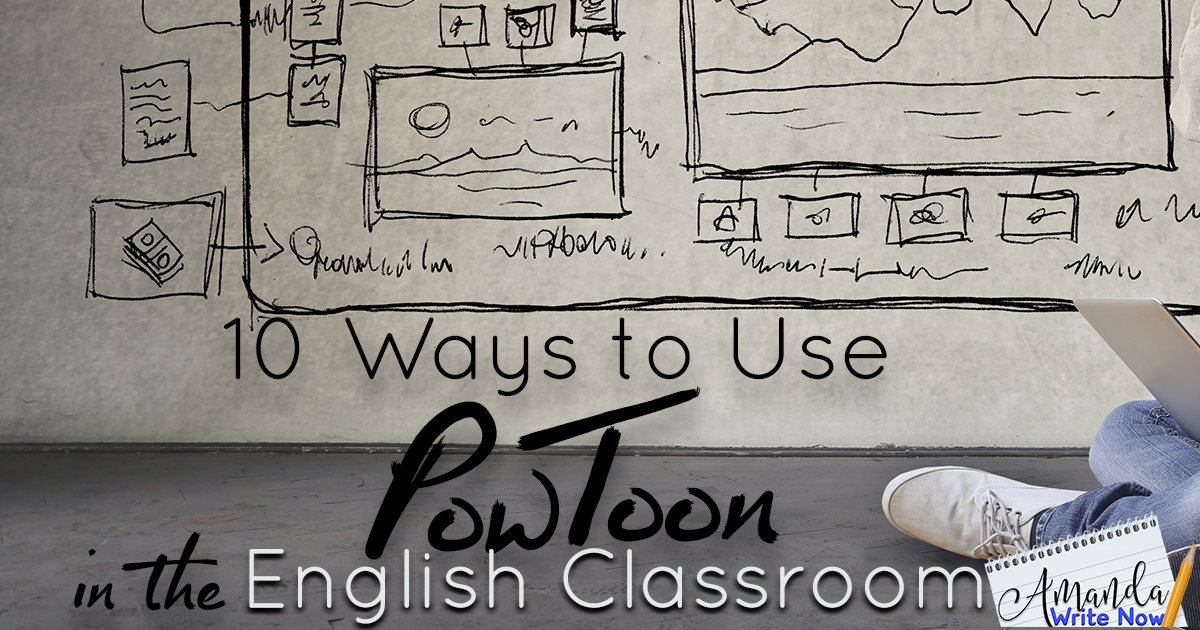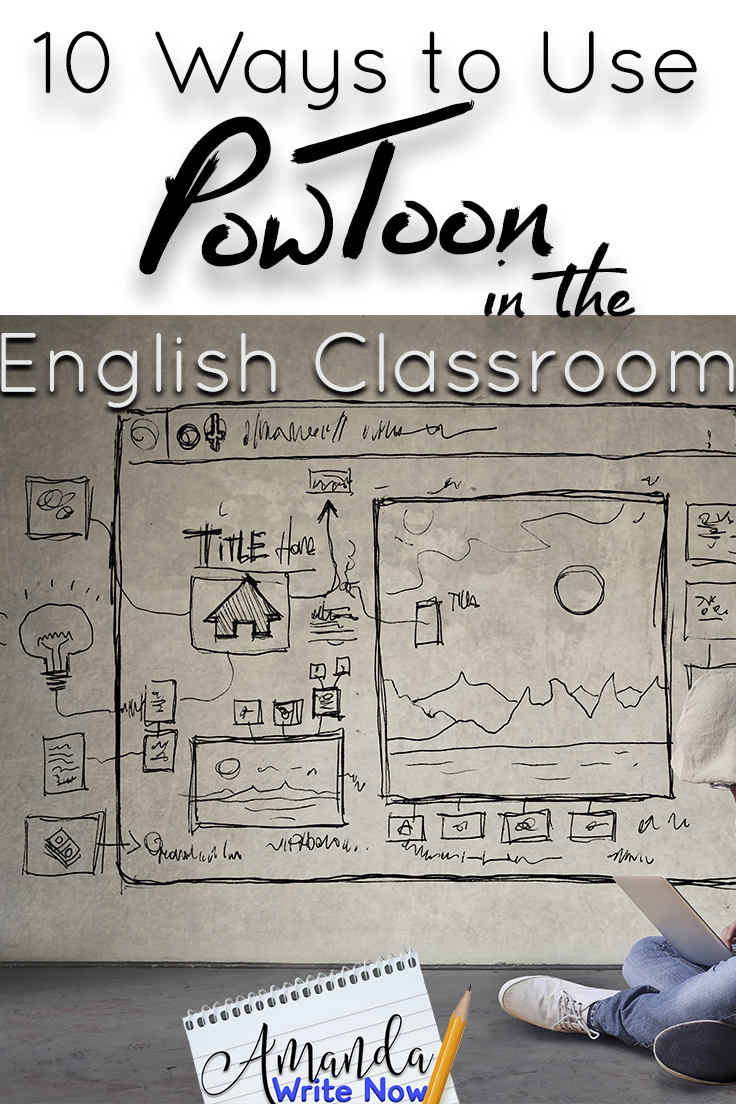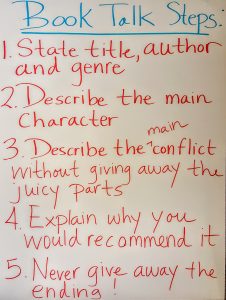
PowToon is a fun and fairly easy video creation tool for teachers and students. The company already has an excellent blog post about how teachers can utilize this tool in their classrooms here.
This blog post is about how students can use PowToon for ten writing and reading tasks!
Here is an excellent tutorial video you can show your students to get them started with how to use PowToon…
1. Create an All About You Video
Back to school is a great time for students to create a short video to get to know each other.
Possible Requirements: state your name, favorite subject, favorite book, favorite hobby and a goal for the school year.
Here’s an all about me PowToon video I created to introduce myself to other writing teachers visiting my website…
2. Excite Peers with a Book Talk
Book talks are an excellent way for students to share their excitement about books and get recommendations from each other. You could require that students create a book talk once a month, every quarter or semester using PowToon.
The chart to the right is what I hang in my classroom for students so that the book talk requirements are clear. Students look at it frequently during their book talks, it is a nice crutch for students who might be a bit nervous. Feel free to use it in your class. Click here for more charts you can use in your class!
Here’s an example done by a teacher for you of a book talk…
3. Provide a Literary Analysis
As a secondary English teacher you are most likely overwhelmed by grading essays. Instead of assigning an essay assign a PowToon project. Below is an example of a literary analysis PowToon. It is not perfect by any means. I’d say there is too much text and it is a little long, but I bet the person who created it, learned a ton in the process!
Possible Requirements:
State your claim/thesis, provide reasons and evidence to support your claim. Use music, images and transitions to keep audience attentive. The video should be no longer than three minutes.
4. Explain Literary Terms
If you want students to learn vocabulary, they need to use it frequently in discussions with others and throughout their daily life. Creating a video where students have to show words in action can be incredibly helpful in solidifying student understanding of terms.
Possible Requirements:
Pick five literary terms you struggle to remember. Create a PowToon in which the words come to life. Don’t just define the words, provide examples of the words in context.
5. Demonstrate Parts of a Narrative
Students sometimes struggle to elaborate in their writing whether it is about the main character, the setting of their story or the climax. To support students in elaborating you might want to have them create a PowToon depicting some or all of these aspects of their narrative.
Possible Requirements:
Introduce the main character of your narrative, what do they look like? What are their hobbies? What are their strengths and weaknesses? How are they feeling? Who do they trust? Who do they distrust? What are their fears, hopes and dreams?
Below is a video you can show your students to review how the plot of narratives usually go…
Make a video of just the climax of your story. Provide a short summary of the beginning and middle of your story then show us the most exciting, crazy, scary, sad or thought provoking part of your narrative through animations, sound and transitions.
6. Provide Information
One of the most obvious ways to use PowToon is to have students present information about a topic. If they are writing informational articles in your class, why not require they embed a link to a short informational video on the topic too? This can be a great next step for strong writers who are looking to beef up their work.
Possible Requirements:
Once you finish writing your informational article create a short (two minutes max) PowToon video summarizing the main ideas of your article to your audience.
7. Argue a Claim
Students often have difficulty organizing an argumentative article. Creating a video can help!
Possible Requirements:
Create a short PowToon video where you state your claim, provide one convincing reason evidence in the form of a quote that supports your reason. Do this again for reason number two and three. Make sure to add pictures and transitions between each reason.
Here’s a great PowToon video you can use to review parts of an argument…
8. Share a Biography
Students need lots of practice writing informationally. They also need opportunities to discover how great people came to be the people they are today. I love giving students the opportunity to study, in depth, a person they look up to.
Possible Requirements:
Create a short informational video about someone you look up to. This informational video can include information about their childhood, obstacles they overcame, where they are today and why you look up to them.
Here’s an example biography PowToon video you can show your students to get them started…
9. Read Poetry
Reading poetry correctly can be tough! Why not have students practice rhythm, meters, alliteration, assonance and repetition through video?
Possible Requirements:
Choose a poem that demonstrates one of the poetic devices above and create a video in which you read the poem and discuss the poetic devices you notice.
NOTE: recording your voice directly through PowToon causes awful sound quality. Use a program called Audacity to record your voice, then upload it to PowToon. Audacity can be a bit challenging to use and requires a plugin to download the audio as an Mp3 but there are many tutorial videos about how to use it. If you have a Mac you could use a free app called GarageBand too!
Here’s a PowToon video that explains various poetic devices for review with your students…
10. Teach Grammar Rules
Lots of English teachers struggle with how to teach grammar. Should I teach it as direct instructional lessons and have students practice through worksheets OR should I teach it through the writing process while students are actually in the process of writing? I personally favor the latter approach. But I do think that video can be an excellent way to help students understand difficult grammar concepts such as the difference between a semi colon, colon and commas or various clauses or about passive vs. active voice.
Possible Requirements:
Choose a grammar concept from the list above and create a tutorial video for an audience that is clueless about this concept. Don’t just define the grammar rule, provide lots of examples and entertain your audience with music, images and transitions. Below is an excellent and entertaining grammar video using PowToon…
Wrap Up…
PowToon is an easy tool to engage students in activities you have already been doing in your classroom for years.





0 Comments